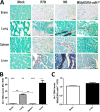Alteration of Fermentative Metabolism Enhances Mucor circinelloides Virulence
- PMID: 31685547
- PMCID: PMC6977124
- DOI: 10.1128/IAI.00434-19
Alteration of Fermentative Metabolism Enhances Mucor circinelloides Virulence
Abstract
The fungus Mucor circinelloides undergoes yeast-mold dimorphism, a developmental process associated with its capability as a human opportunistic pathogen. Dimorphism is strongly influenced by carbon metabolism, and hence the type of metabolism likely affects fungus virulence. We investigated the role of ethanol metabolism in M. circinelloides virulence. A mutant in the adh1 gene (M5 strain) exhibited higher virulence than the wild-type (R7B) and the complemented (M5/pEUKA-adh1+) strains, which were nonvirulent when tested in a mouse infection model. Cell-free culture supernatant (SS) from the M5 mutant showed increased toxic effect on nematodes compared to that from R7B and M5/pEUKA-adh1+ strains. The concentration of acetaldehyde excreted by strain M5 in the SS was higher than that from R7B, which correlated with the acute toxic effect on nematodes. Remarkably, strain M5 showed higher resistance to H2O2, resistance to phagocytosis, and invasiveness in mouse tissues and induced an enhanced systemic inflammatory response compared with R7B. The mice infected with strain M5 under disulfiram treatment exhibited only half the life expectancy of those infected with M5 alone, suggesting that acetaldehyde produced by M. circinelloides contributes to the toxic effect in mice. These results demonstrate that the failure in fermentative metabolism, in the step of the production of ethanol in M. circinelloides, contributes to its virulence, inducing a more severe tissue burden and inflammatory response in mice as a consequence of acetaldehyde overproduction.
Keywords: Mucor circinelloides; acetaldehyde; alcohol; alcohol dehydrogenase; dimorphism; ethanol; fermentative metabolism; mucoral; mucormycosis; oxidoreductases; virulence.
Copyright © 2020 American Society for Microbiology.
Figures










References
Publication types
MeSH terms
Substances
LinkOut - more resources
Full Text Sources
Molecular Biology Databases

